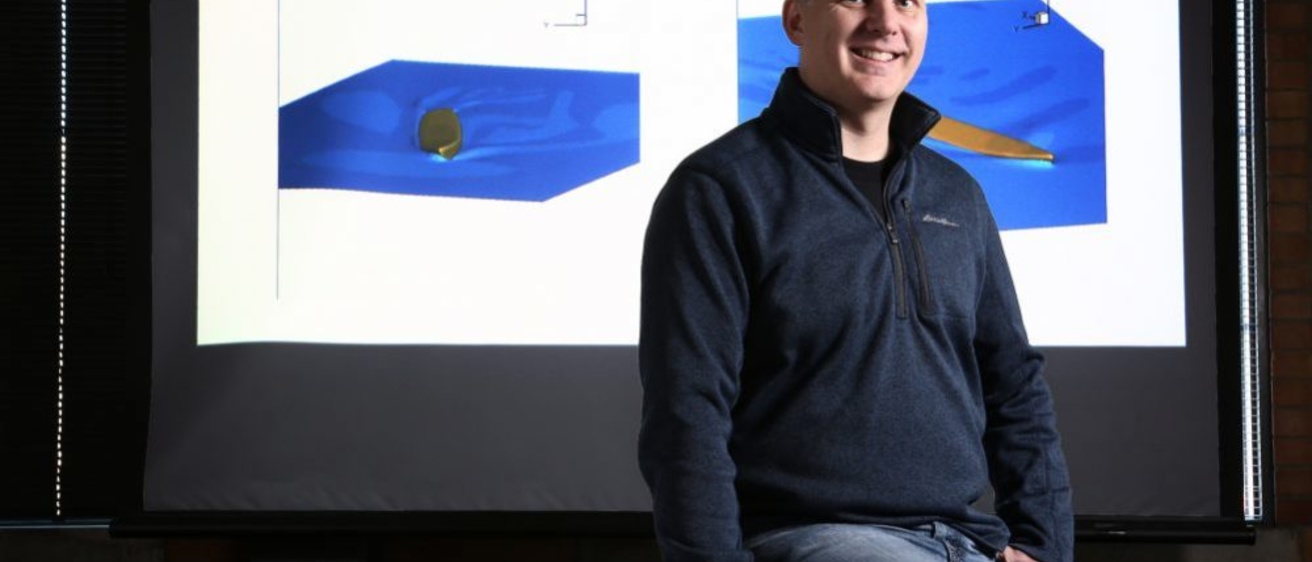By Mikael Mulugeta
Sean Seelau, a senior mechanical engineering student, will be the first to graduate in May with a certificate in Naval Hydrodynamics at the UI.
After receiving a grant from the Office of Naval Research in the summer of 2015, IIHR—Hydroscience & Engineering researchers Pablo Carrica and James Buchholz developed the certificate for undergraduate students.
“IIHR has a very long history of graduate education on naval hydrodynamics,” says Carrica, a professor of mechanical and industrial engineering. “We’ve done a lot of research for the Navy using facilities like the tow tank and the wave basin. We thought, ‘Why not make that background and those tools available to undergraduate students?’”
The certificate, which became available to students in the 2016 spring semester, requires completion of 18 semester hours from a pool of courses focusing on fluid dynamics, experimental and numerical methods, and naval hydrodynamics. Two courses, Computational Naval Hydrodynamics and Experimental Naval Hydrodynamics, were created specifically for the certificate, and multiple students working toward the certificate are expected to graduate in December 2017.
Seelau says he became interested in pursuing the certificate because of the open-ended projects, the opportunity to use various IIHR facilities, and his interest in fluid dynamics.
“The lab class that is offered allows you to design the experiments yourself, which challenges our problem-solving skills in the way real jobs will,” says Seelau. “I was put in situations where I’d be given a task but wasn’t told how to do it. It’s a very hands-on and real to life process.”
The certificate aims to give students the technical and leadership skills that will prepare them for civilian careers in Navy science and technology positions, as well as other supporting industries.
“Working with ships, autonomous underwater or surface vehicles, drones, and aerospace all use the same tools that we teach in our certificate,” says Carrica. “If students are interested in doing research on hydrodynamics or aerodynamics, this certificate would be great for them.”
Carrica and Buchholz also plan to engage high school students through outreach programs, designed to teach STEM principles inspired by hydrodynamics problems in naval architecture.
Seelau, who lives in Cedar Rapids with his wife and children, worked for over 20 years, mostly for a telecommunications company, before attending the UI in 2013. He says he plans to look for work involving fluid dynamics in the Iowa City and Cedar Rapids area.
“I’m definitely looking for a job involving fluid dynamics,” says Seelau. “Maybe with alternative energies like wind turbines or working for a consulting firm, potentially with the infrastructure of buildings and their air flow systems and piping. My work will involve fluid dynamics in one way or another.”
